
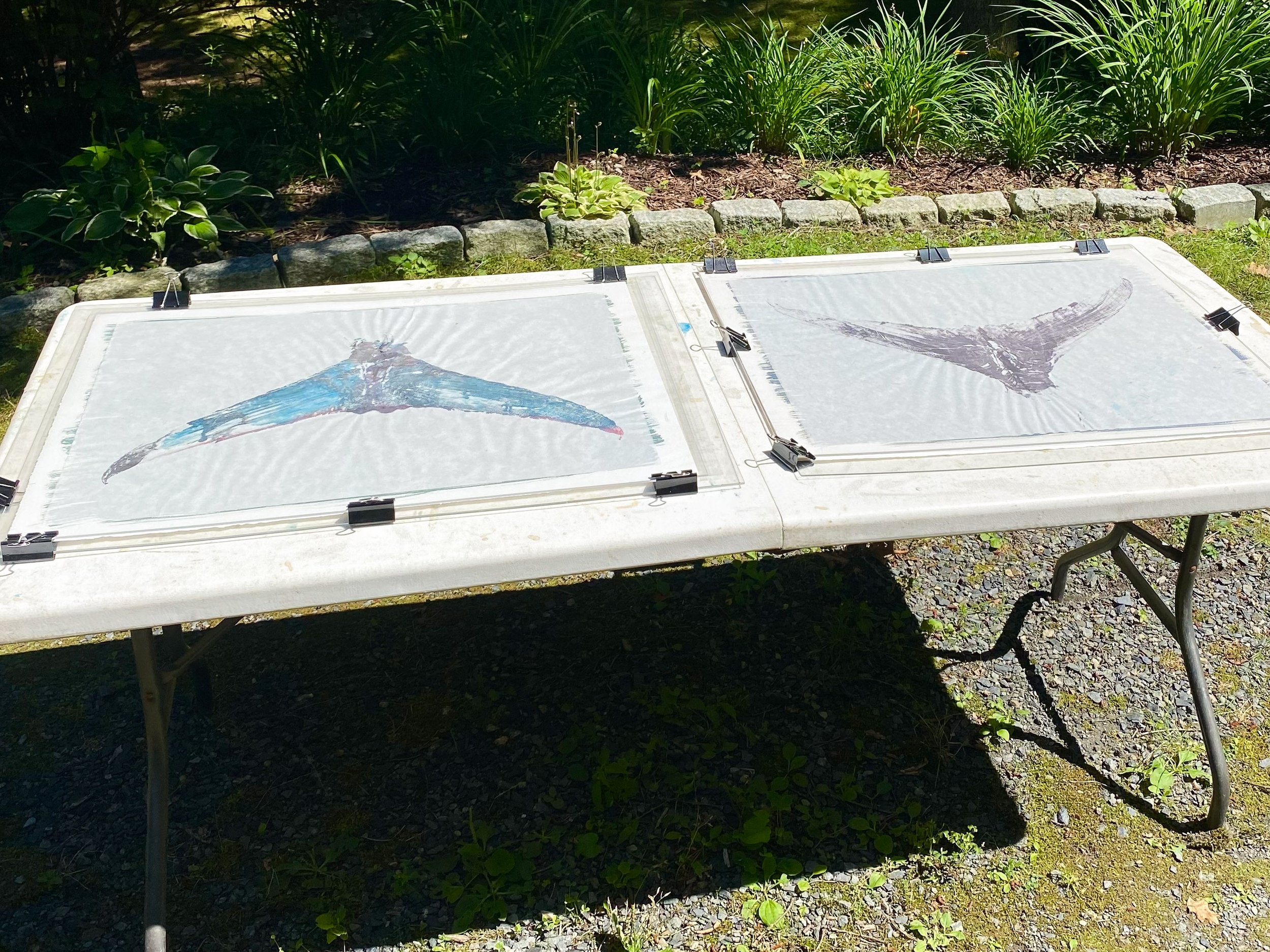


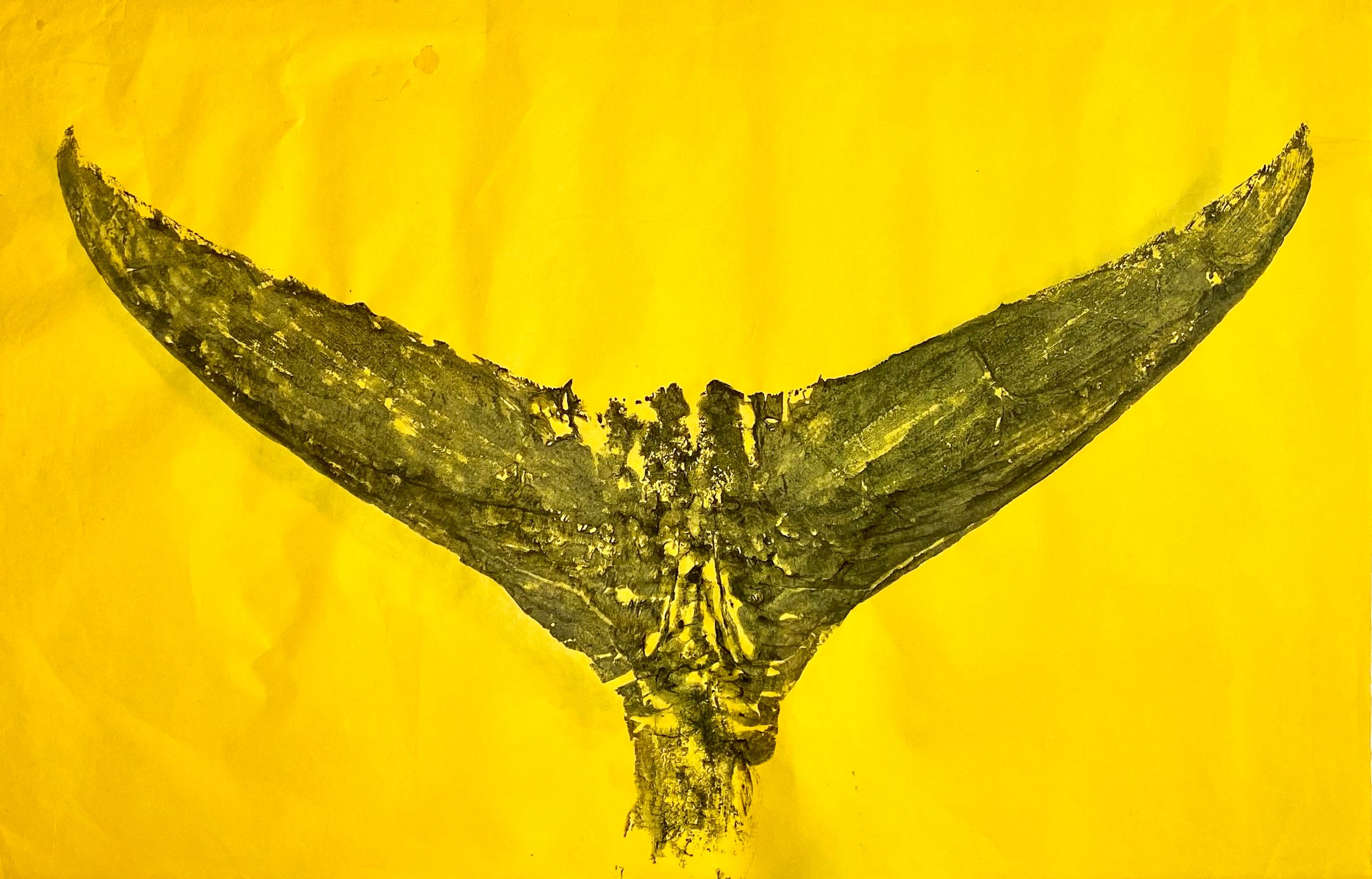
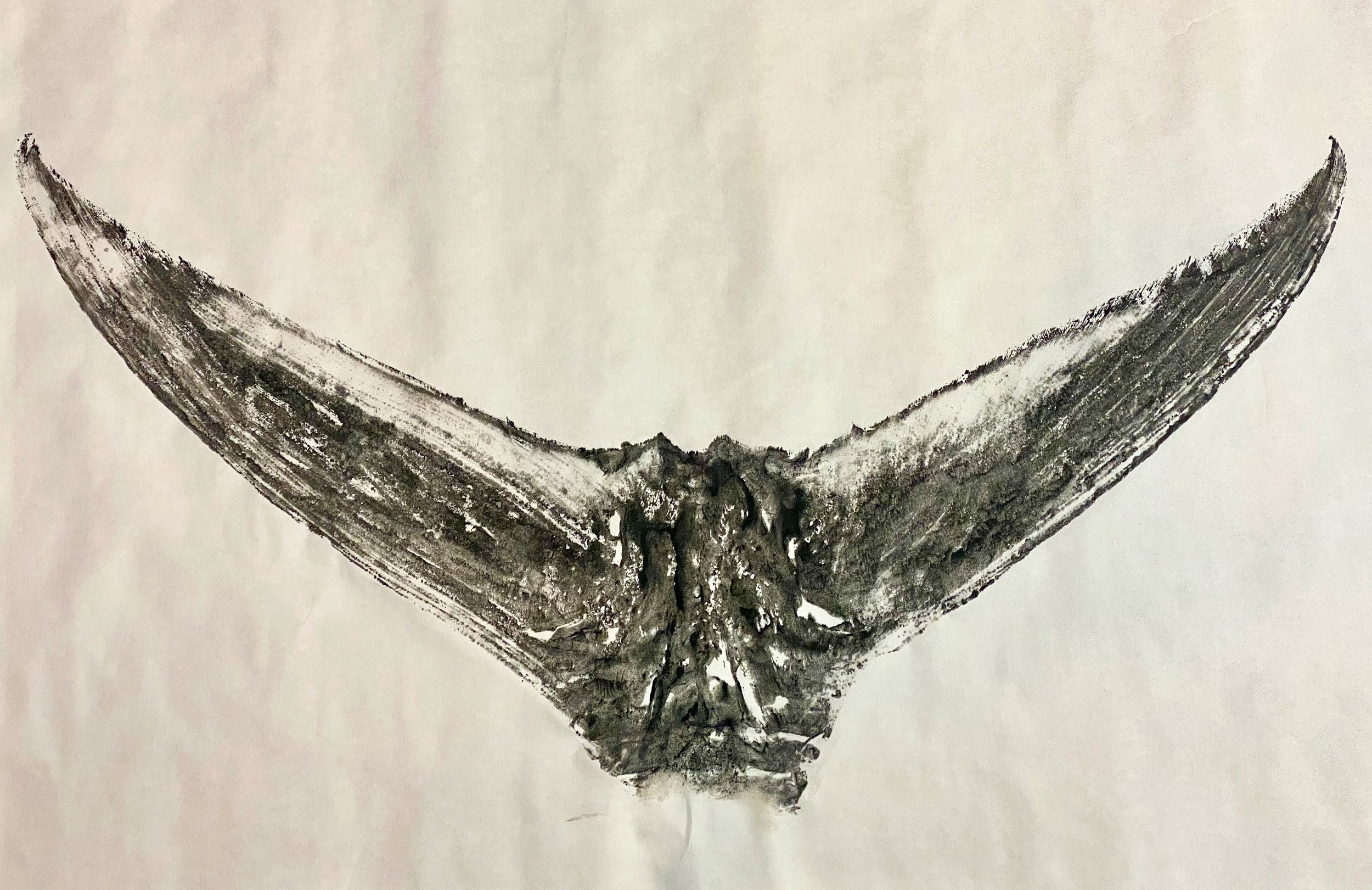

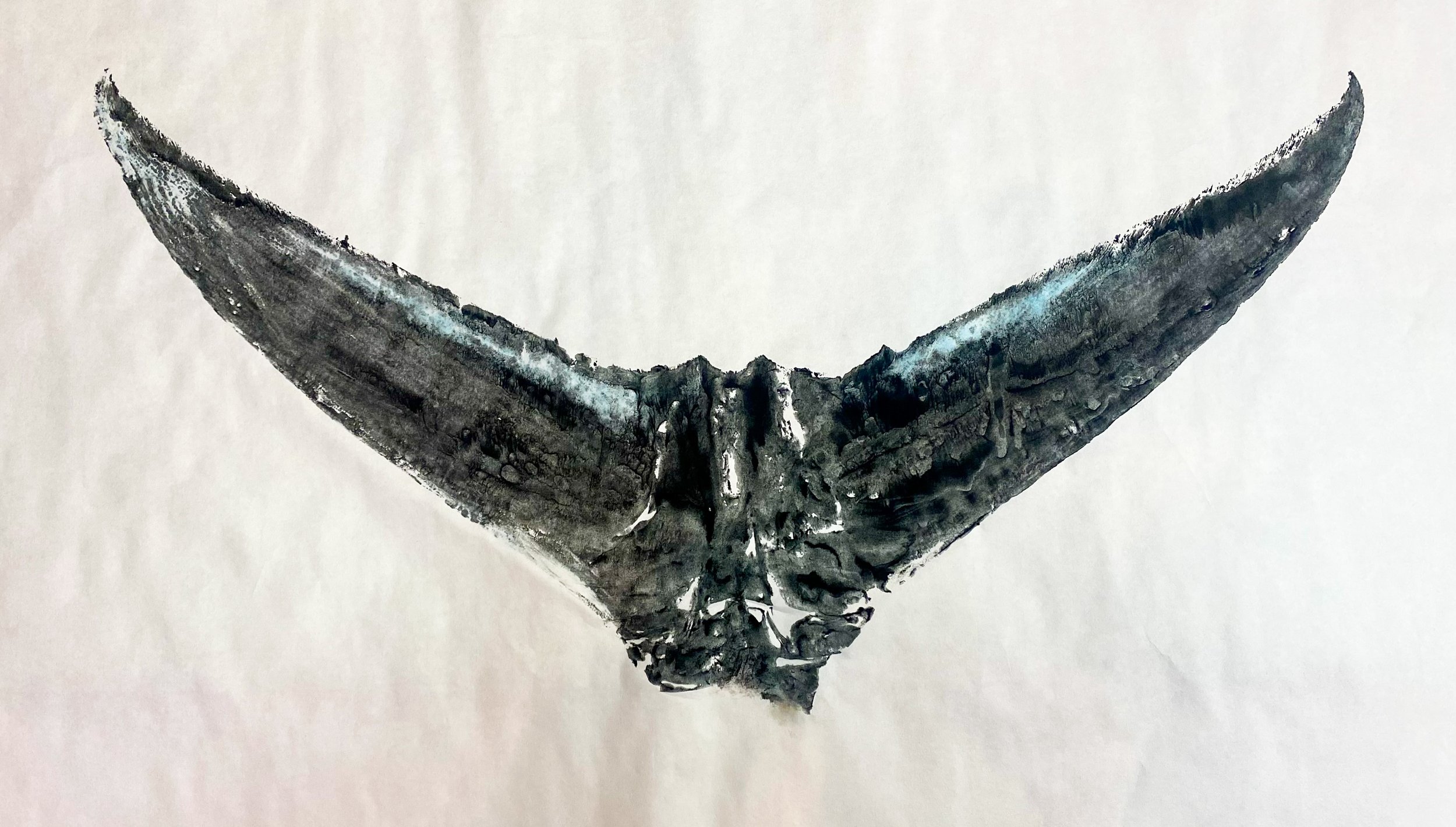
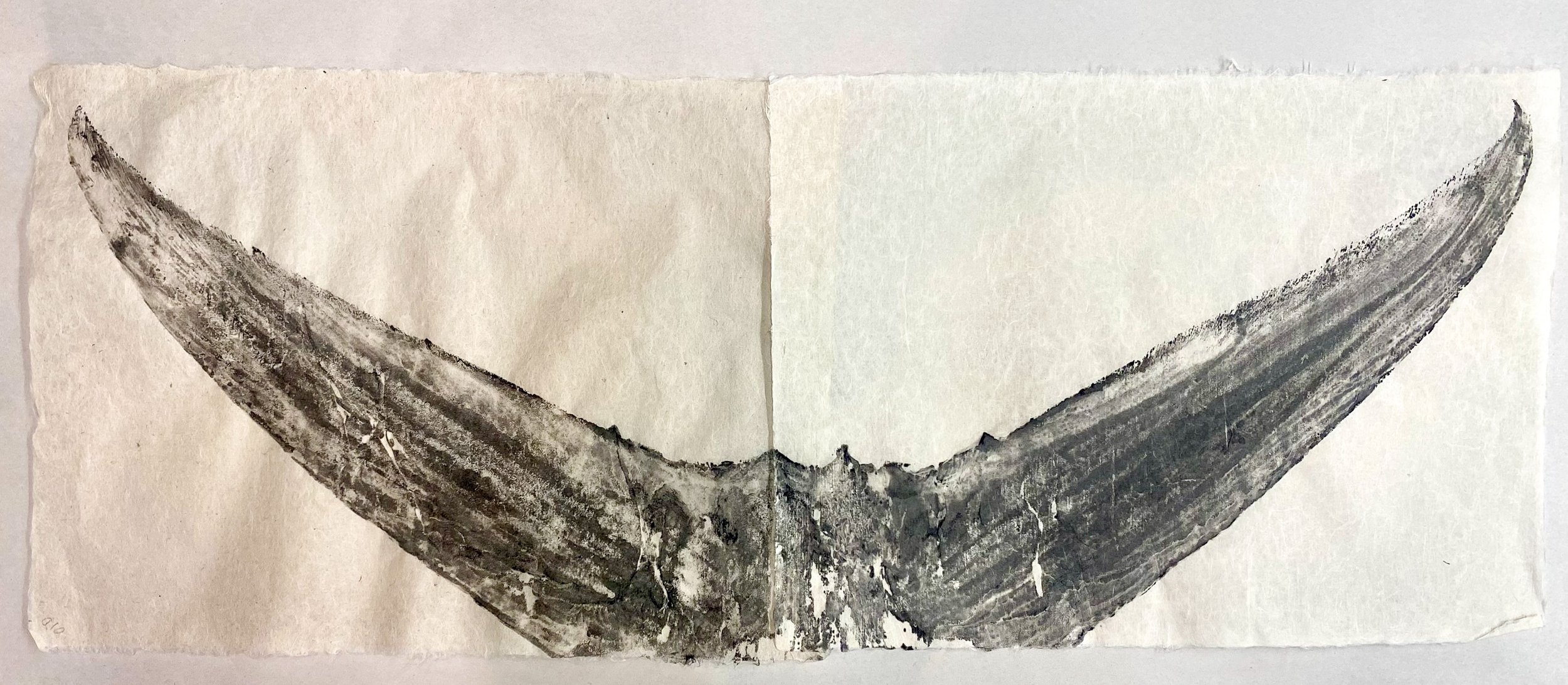
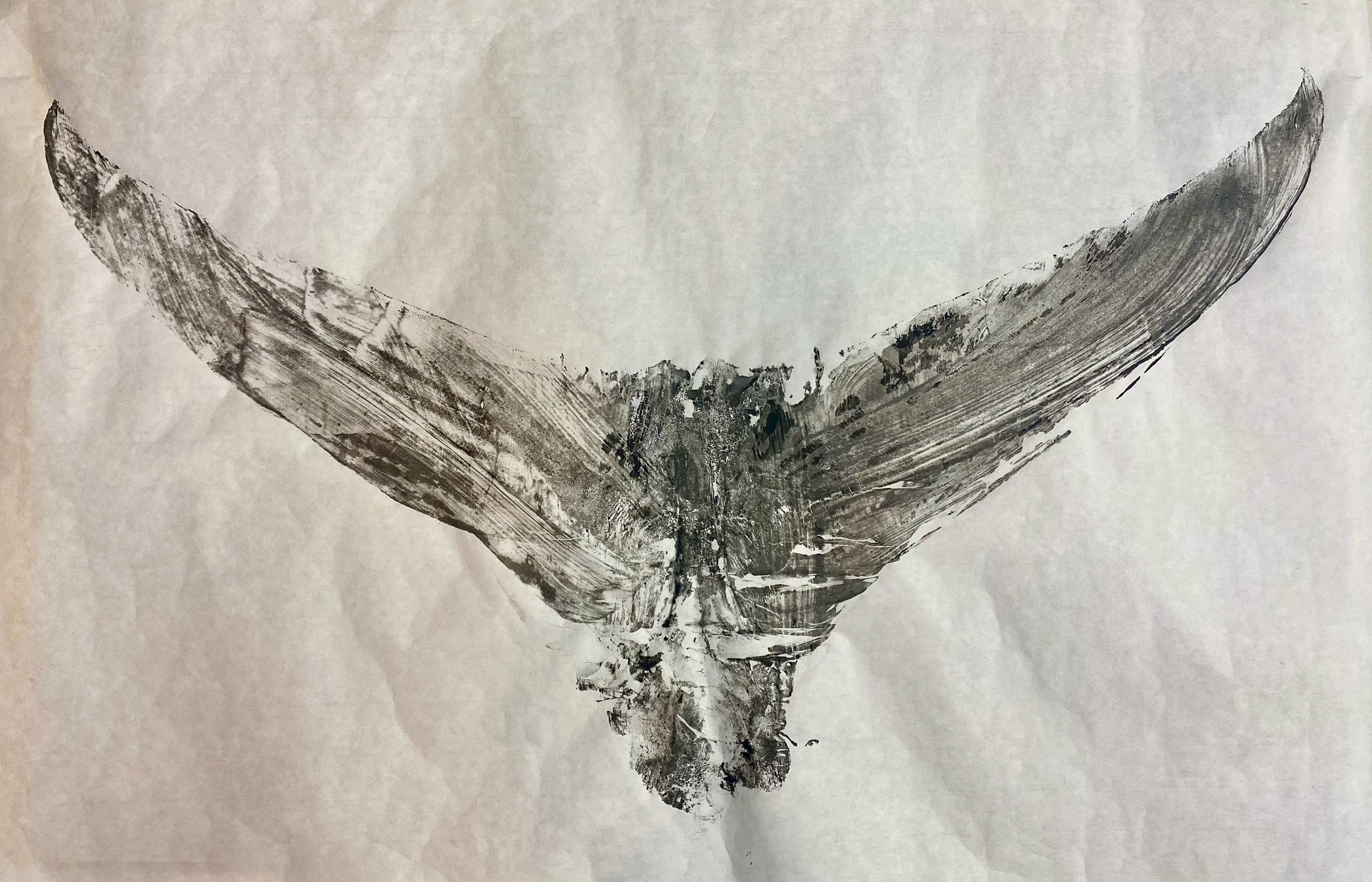

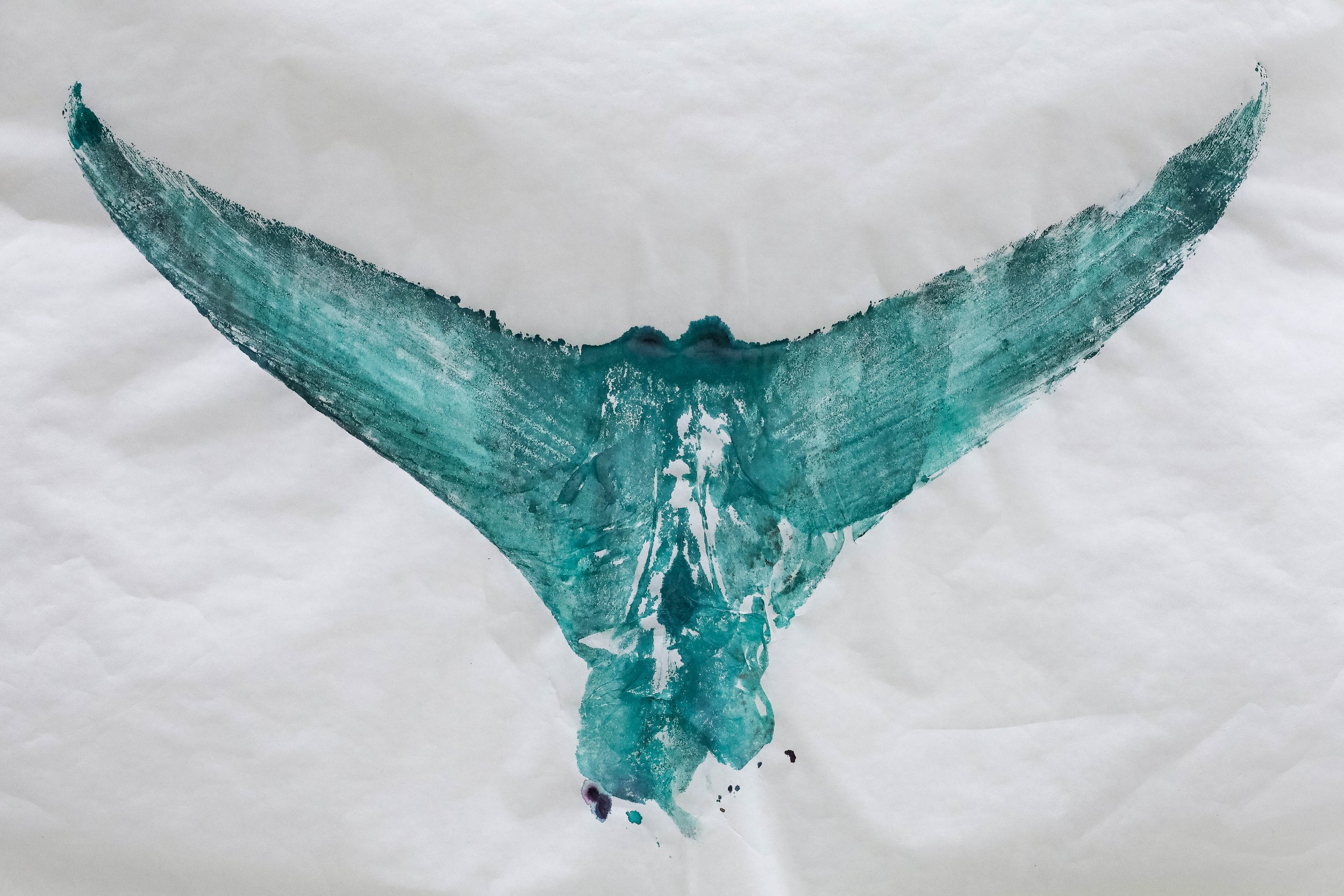

Gyotaku Prints the art of fish printing
Still used today, Gyotaku is a practice which dates back several hundred years and is the traditional method Japanese fisherman use to record their catch. It is still a method used today around the world. More recently, it is an art form.
These prints are made from the tail of a bluefin tuna that was caught on rod and reel by a local fisherman in Cape Cod Bay. It was graded and specially selected to be shipped to Japan for auction. We are connected by our oceans and our enterprise.
As a tuna consumer, there is a cognitive dissonance that grants me little emotional response when I pick up a piece of tuna with chopsticks and put it in my mouth. The process of Gyotaku, however, connects me with the fish and its path to me, producing an awareness of its life only a short time before and the community that makes it possible to be handling a bloody tail from a fish already enroute to another country. Though the final prints are delicate and tranquil, the Gyotaku process causes a visceral reaction with its strong smells and dripping fluids. It conjures what the kill might have been like for both the fish and fisherman and the demands a community that harvests the oceans must meet. These prints serve as a method for acknowledging and appreciating that which we take from nature.
The other method I chose to use is Cyanotype, this print was made from the original Gyotaku print, placed directly on a cyanotype coated paper. Due to the thinness of the Japanese paper it was perfect for this alternative photographic method.